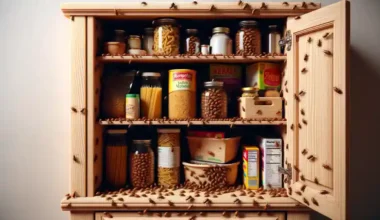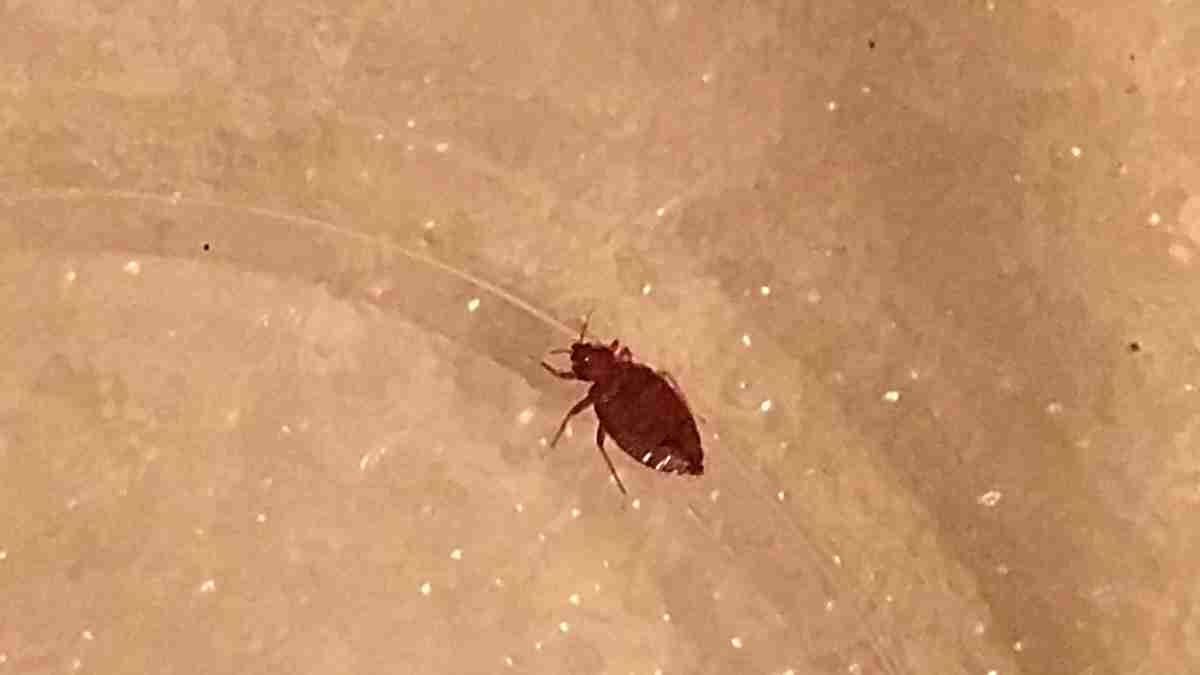Someone who has bed bugs was in my house, what should I do? Bed bugs are known for infesting homes, hotels, and other places where people stay. They may readily move from one place to another by riding on clothing, personal objects, or even luggage. If someone with bed bugs has been to your home recently, you need to take action right once to stop an infestation. This detailed guide will help you find bed bugs, cure them, and keep them from coming into your house.
Someone who has bed bugs was in my house

Bed bug problem is often serious, and needs to be controlled ASAP. Don’t call out the person you suspect because they may not be responsible after all. Instead, do these if someone who has bed bugs was in your house:
1. Identify the bugs
Before you start treating your home for bed bugs, you need to make sure you really do have a problem. Adult bed bugs are roughly the size and form of an apple seed. They are small, flat, and oval. They are six-legged and have a reddish-brown tint. Nymphs are young bed bugs that are smaller and lighter colored than adults.
Signs of bed bug presence in your house include:
- Seeing live or dead bed bugs
- Crushed bed bugs can leave little, rust-colored stains on sheets or mattresses.
- Dark stains of feces on sheets, mattresses, or walls nearby
- Eggs or shells that are little and white (about 1mm in size)
- Skins that molting nymphs shed
- Bites on your body that don’t make sense, often in groups or lines
Once you identify these signs after the person is gone, it’s time for a little work on your end.
2. Contain the bed bug spread
Once you know you have bed bugs, take these first steps to stop them from spreading and start getting rid of them:
- Close off the room(s) where the bed bugs were detected. This will assist keep them from moving to other sections of your home.
- Tell the guest who brought the bed bugs into your home what’s going on. They might not know they have an infestation, so they will have to take action to fix the problem in their own home.
- Vacuum all floors, carpets, and furniture in the afflicted area, paying particular attention to seams, edges, and any cracks where bed bugs can hide. Put the bag or its contents in a sealed plastic bag and throw it away outside.
- Wash and dry any contaminated fabrics. Use hot water and a high-heat dryer setting to wash and dry all bedding, curtains, and clothes in the affected area. This will kill any bed bugs or eggs that are on the materials.
3. Determine if you can exterminate them yourself
Consider between help from a professional vs. doing it yourself.
When someone who has bed bugs was in your house, you can either hire a professional exterminator or try to take care of the problem yourself. There are benefits and cons to each choice.
If you hire a professional exterminator, it can be more effective and save you time and effort to hire a professional pest control company. Pest control experts have tools and chemicals that most people don’t have access to. But professional pest control can be expensive, and you may need more than one treatment to get rid of the problem altogether.
If you do bed bug treatment yourself, it can be a cheaper way to get rid of bed bugs someone brought to your house, but it may take a lot of time and work.
Your treatment options include insecticides, heat treatment, cold treatment, or non-chemical procedures like steam cleaning, or diatomaceous earth to get rid of bugs.
Note that how well a do-it-yourself approach works depends on how bad the bed bug infestation is and what methods you use.
4. Treatment with pesticides
If you decide to use pesticides, purchase certified products that are designed to kill bed bugs. These can be aerosols, sprays, or powders. Follow the manufacturer’s directions for how to use the product and how to keep yourself safe.
Some common pesticides used to kill bed bugs are:
- Pyrethroid: man-made compounds that are comparable to chrysanthemum flowers’ natural pyrethrins.
- Neonicotinoids: a group of compounds made in a lab that attack the neurological systems of insects.
- Growth regulators for insects (IGRs): chemicals that act like insect hormones and stop them from growing up and having babies.
Apply the pesticides to the seams and edges of mattresses, box springs, bed frames, headboards, and baseboards, which are common places for bed bugs to hide. Make sure to treat any cracks or fissures in the walls, flooring, and furniture. Keep in mind that some populations of bed bugs have become immune to various pesticides, which may make them less effective.
Since someone who has bed bugs was in your house, begin the treatment from the rooms the person had access to.
5. Use heat treatment for bed bugs
Killing bed bugs and their eggs with heat treatment is successful. Bed bugs don’t like temperatures above 120°F (49°C) and will die if they are exposed to them for a long time.
According to the Department of Entomology, Virginia, bed bugs exposed to 113°F will die if they receive constant exposure to that temperature for 90 minutes or more. However, they will die within 20 minutes if exposed to 118°F.
Bed bug heat treatment can be done in several ways:
a. Portable heaters
You can rent or buy portable heaters made to heat a room to the right temperature to kill bed bugs. Follow the instructions from the maker to set up and use the item correctly.
b. Steam cleaning
For bed bugs in your couch, mattresses, furniture, and other infested goods, use a high-heat steam cleaner. Bed bugs and their eggs will die as soon as they come into contact with the steam’s high temperature.
c. Clothes dryer
As was already said, bed bugs and their eggs can be killed by washing and drying clothes on high heat. Putting contaminated things in a dryer in the highest heat setting for 30 minutes can be an effective therapy.
6. Bed bug treatments without chemicals
In addition to chemical insecticides and heat treatments, there are other ways to get rid of bed bugs that don’t include chemicals:
a. Diatomaceous earth
This is a natural, non-toxic powder produced from the fossilized remnants of small aquatic organisms. When bed bugs touch diatomaceous earth, it hurts their outer shell, which makes them lose water and die. Put a thin layer of diatomaceous earth that is safe for food in any nooks or crevices where bed bugs might hide.
b. Vacuuming and sealing
Thoroughly vacuum all areas with bed bugs and seal any cracks, gaps, or crevices in walls, floors, and furniture where bed bugs could hide.
c. Encasements
Buy covers for your mattress and box spring that are made to catch and kill bed bugs. Bed bugs cannot get in or out of these encasements since they are composed of densely woven fabric.
7. Prevent bed bugs from returning
After getting rid of bed bugs due to someone who has bed bugs was in your house, keep an eye on the situation and take precautions to stop them from coming back because bed bugs do return after some months.
Consider the following preventive measures:
a. Put bed bug interceptors under the legs of the bed
These are little plastic devices that catch bed bugs when they try to climb up or down the bed. Check the interceptors regularly for bed bugs and get rid of them in the right way if you find any.
b. Keep your home clean
Vacuum, clean, and get rid of clutter regularly to make it harder for bed bugs to hide.
c. Check your stuff
When you get back from a trip or after having people over, check your baggage, clothes, and other things for signs of bed bugs.
d. Educate yourself and others in the household
Learn how to prevent bed bugs, find them, and get rid of them. Tell your friends and family about this to help stop the spread of bed bugs.
Ultimately, if bed bugs won’t leave after treating them yourself, do not hesitate to involve professionals. Remember, “the earlier, the better.”






